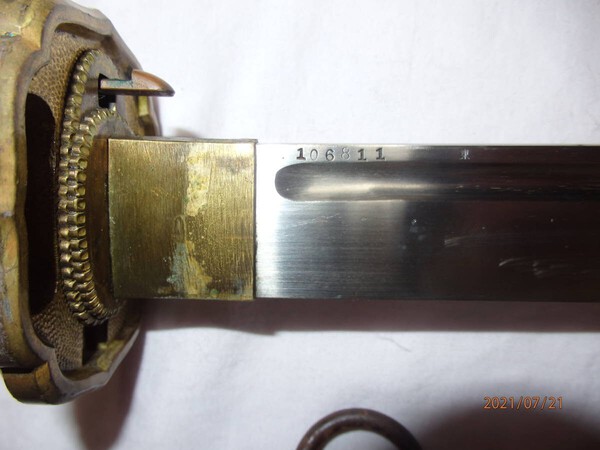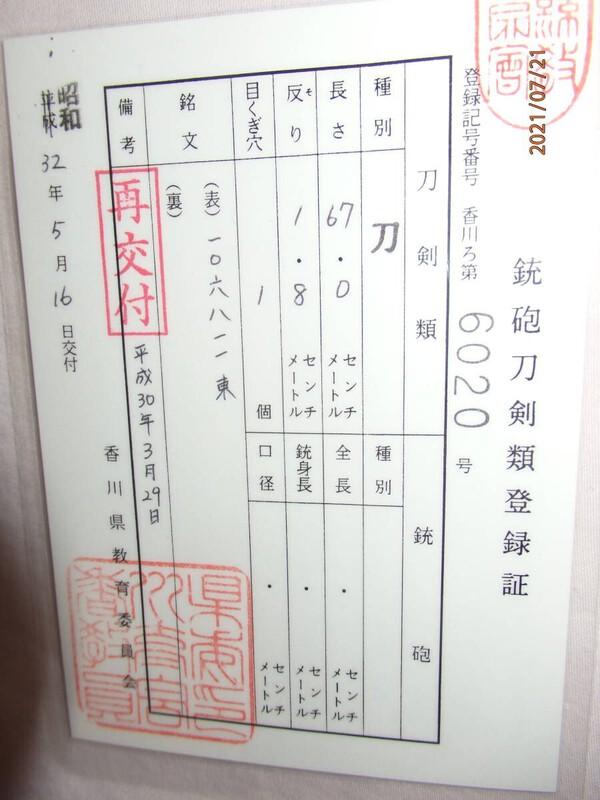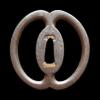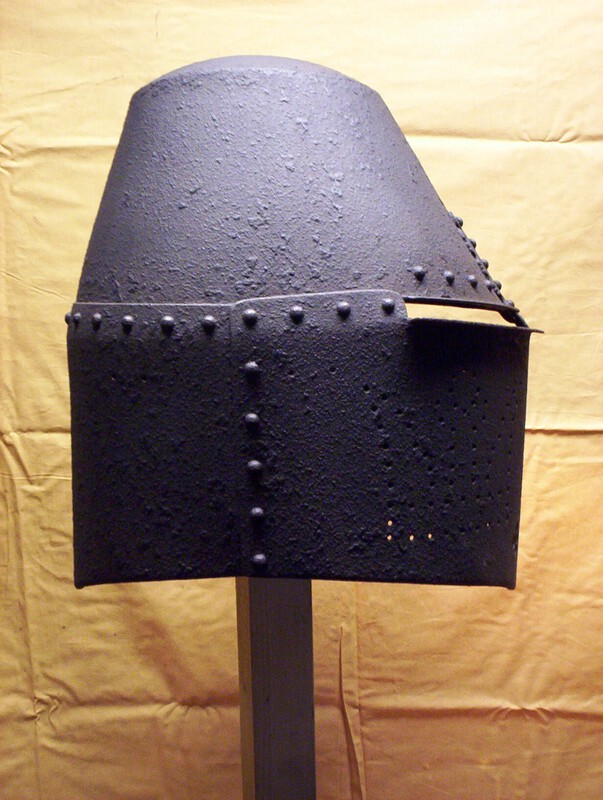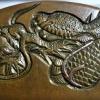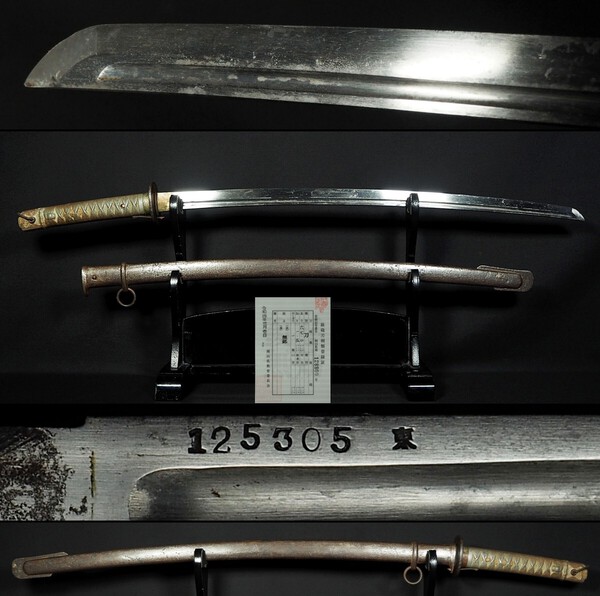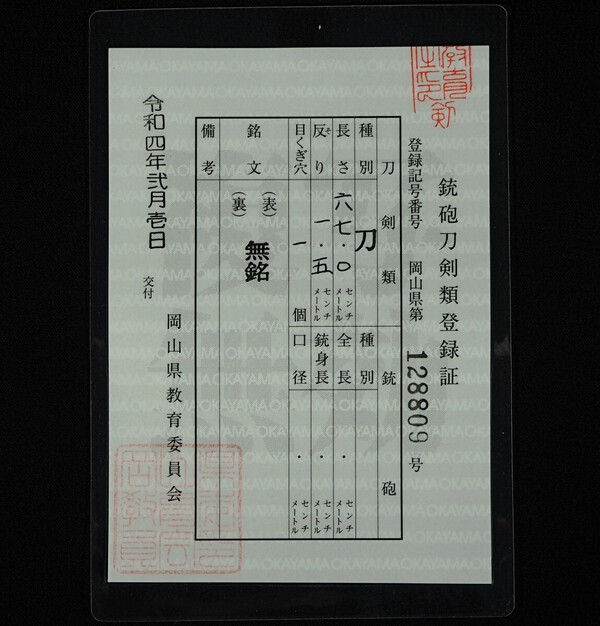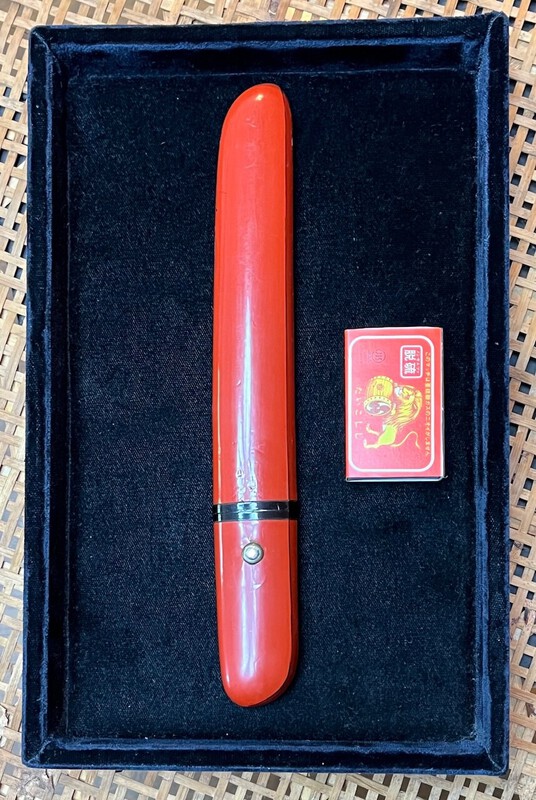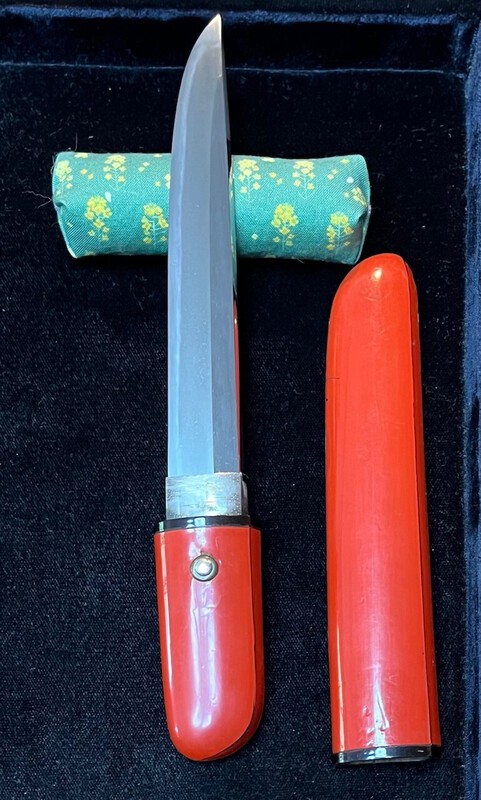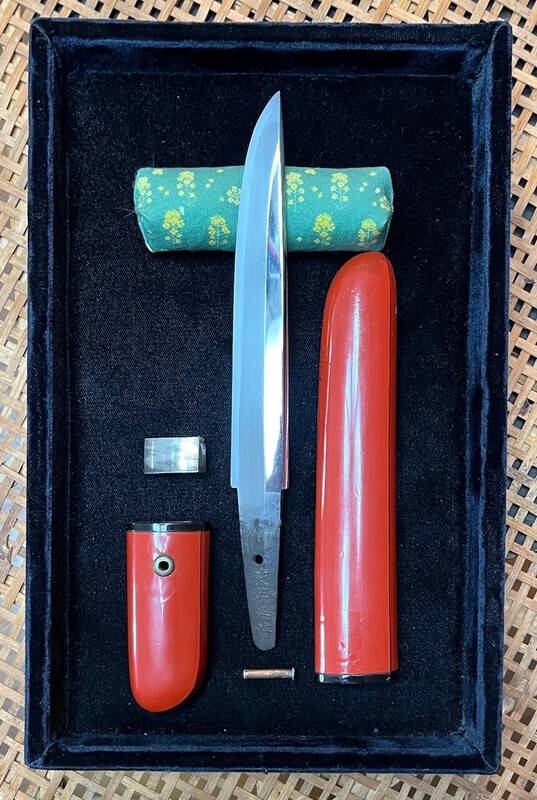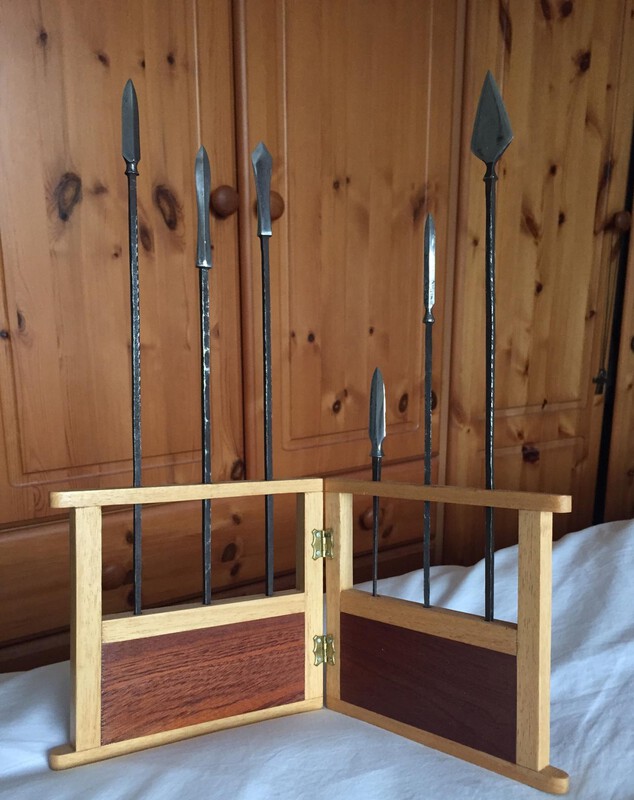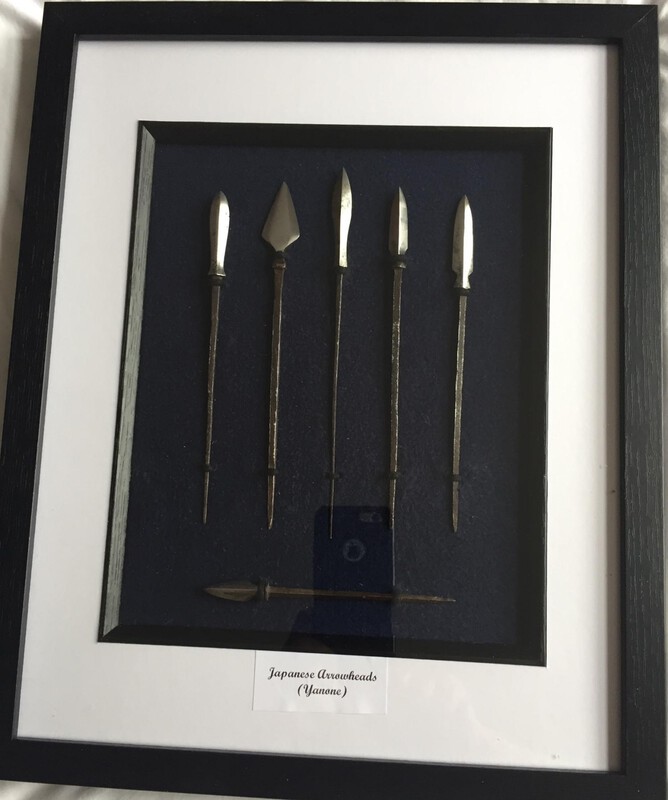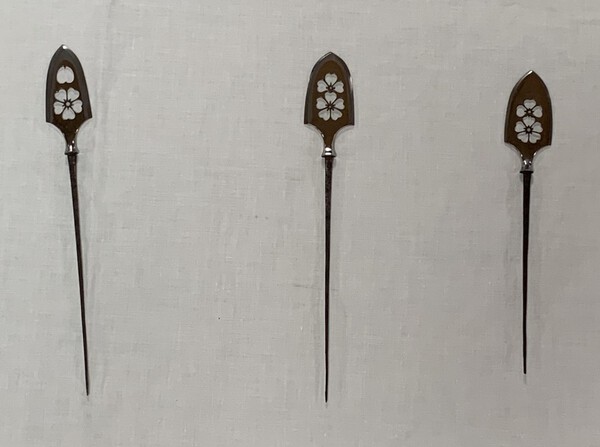Leaderboard
Popular Content
Showing content with the highest reputation on 04/24/2024 in Posts
-
I think the plant design is a little ambiguous. I can see the resemblance to a Maple leaf plant motif but it also has characteristics of Kiri? The example below from the Varshavsky collection is not a million miles away from your tsuba design, the Kiri motif is just "pulled" further out of the rim and has the usual central top of the leaf which is missing on the one you have. [I have no idea why] " The Kiri (桐) pattern is generally composed of three standing straight inflorescences and three leaves." https://www.samuraimuseum.jp/shop/episode-5-design-plant②/ https://varshavskyco...collection/tsu-0259/ “Gosan no Kiri” once was used by royal families or leaders for their emblems, and it’s being used even ordinary people today as their family crests. Arabesque designs are put between “Gosan no Kiri” patterns and engraved by openwork. Arabesque pattern represents prosperity and longevity. Maples would tend to have more tips to the leaves [depends on each species]7 points
-
Sam, I would love to hold your TSUBA in hand, but just looking at the photos, I think it is a legit OWARI TSUBA. The "irregularities" on the MIMI are either TEKKOTSU, but more likely old corrosion remains. Signs of casting would look completely different.5 points
-
I think you meant to say “with no respect”? why do you think it’s good advice to tell someone to “take a hammer to it” when you haven’t got a clue what it is?4 points
-
4 points
-
So, newbies in the USA (Dan and Sam S.) now say Owari Tsuba are "cast". I would love to see and feel this tsuba in hand. I don't see anything as such from the limited number of photos provided. What I do see looks to be rust and corrosion damage to the plate surface. There are several iron bones along the rim typical of Owari Sukashi tsuba. If this form lacks high quality examples in excellent conditions to study, I have a few that I can offer to discuss that were once or us still in my collection.3 points
-
Japan auction. Type95 with registration paper. We see some Type95 over the time in Japanese auctions. But this is the first one i see with a new registration paper. Did something changed in the law?3 points
-
There’s no raining on this parade . It’s no problem at all - I’m here to learn. Hopefully I’ll get some more opinions that help confirm or deny that if it’s cast. Here’s some more photos where I focused on some of the areas you circled. I appreciate the help! It’s always a learning experience (last photo of one of the more smooth sides) All the best, -Sam3 points
-
The thing that amazes me Colin, is the skill with which the armourers of old managed to make such compound shapes, which today, while difficult enough to do in the traditional manner, are cosiderably easier given the homogenous state of modern smelted and rolled metals, ie. no slag inclusions. Some recent studies in armour metalurgy, have shown some armour ranges from almost pure iron to high carbon steel in just a few centimetres. This must have made forging plates extremely difficult, and the hardening process, where used, perhaps even more so. A true tour de force, made in 1543 by Filipo Negroli of Milan. This is all one piece of metal! Such superb mastery of his material is simply breathtaking. Perhaps the nearest in Japanese metalworking was Myochin Muneakira, who is known to have made somen in one piece! He was extremely adept at repousé.3 points
-
With all respect to the OP - but this is a cast tsuba. The surface of the tsuba is showing small pitting, the lines and carving are far too evenly soft. But the thing that convinces me the most is the seppa-dai area and how it was worked. The tagane-ato punchmarks are not well-defined and too soft. Please compare this to other papered and known examples, they will not show these features.2 points
-
If I had extra money for it, I would buy it in a heartbeat. I really like that one.2 points
-
Thank you. The old ones get en-vogue for a while, but currently seem out of vogue. I thought it would sell fast at that price, but only not too serious tire-kickers. Things like Shingen tsuba, which you couldn't give away 5 years ago, currently seem to be very en-vogue.2 points
-
My apologies, you are right. It's not necessary for me to get defensive. I sincerely am just trying to understand what I have, because I don't know. I only meant to ask questions. This thread really took a left turn, and i'm sorry for my part in that. I am, 100%, without a doubt, out of my depth with fittings. Again, my apologies to anyone I offended, I respect everyones advice, knowledge, and input to this community. -Sam2 points
-
Cherry picking words is poor form - Sam and Colin. I don't mind admitting I often find myself out of my depth in the rather murky waters of tosogu. I will even say I don't know it all - does anyone? "Floundering" is as good a word as any, would "treading deep waters" make people feel better? JMO2 points
-
No need to forgive - you brought me a little joy finding an unknown connection with Dad.2 points
-
No offense Dan, but I was simply asking for the opinions of people more knowledgable than me. Originally I just wanted to know about the motif - maple or kiri. Your post history and past arguments are irrelevant to me. I got this Tsuba originally because I liked it. Simple as that. Floundering? Maybe, but that's my prerogative and $$$. I got it from someone I trust. You even admitted that you could be wrong, but then downvoted ROKUJURO? I just don't understand that logic. Sincerely, -Sam2 points
-
2 points
-
2 points
-
I agree with Jean Collin. I don't see any signs of casting on the tsuba. Nice one! Robert S2 points
-
Coincidentally, the same sword was posted on reddit a couple of days ago (including pictures of the blade and koshirae and a note from the person who purchased it): https://www.reddit.c...vv/inherited_katana/2 points
-
Actually Colin, they had power happers back in the day, this was one of the reasons that certain workshops were situated where they were, fast flowing rivers to power hammers. An abundance of trees for charcoal and of course iron was also usually required if possible. Nes jernverk in Tvedestrand in Norway still have trip hammers that date back to the 1600's, and these are still used every year in demonstrations.2 points
-
2 points
-
Rewrite 戸石合戦 (Toishi kassen) - The battle of Toishi - [村上義清 (Murakami Yoshikiyo) vs. 武田信玄 (Takeda Shingen), ca. 1550] 内藤 (Naito) - family name? 人馬トモ切落 (Jinba tomo (ni) kiri-otosu) - Cut off both man and horse. 光元 (Mitsumoto) Note; Imformation from morita san included2 points
-
@Matsunoki Sorry if this is a bit off topic mods, but this was the sort of thing that I used to do..... Rough and clumsy compared to Colins exquisite handiwork, but great fun to do nevertheless! Basically, if I can hit it, I can possibly make it! A Roman helmet type C made for Harlow Museum, unfortunately the picture was taken after two school classes had handled it! A copy of the saxon 'Pioneer' helmet. Made from a sketch in the Independant newspaper, but which proved to be surprisingly accurate! When I was living in England I repaired quite a few antiques of various types for dealers, including repairing items of Japanese armour from time to time.2 points
-
Hi all - my father is passing and left me this sword, which he got from his father. Grandad was in the occupying army in Japan after WW2. A kind redditor pointed me this way, and said that the writing says “at the battle of Toishi, Naito Mitsumoto cleaved through a man and his horse”. I’d love to learn more about it. The forum won’t let me post all of the pictures; I’ll follow up with more. Thank you, Rick L1 point
-
That's not what I collected at all from the article posted above. There is one mei example which contains Bizen and is suspected to be a work of a student. Even the 2 vs 3 stroke "naga" kanji could have been a student emulating the work of Ichihara under the master's guidance. The most important part of the article is: "Therefore each blade must be judged on its own merits and not simply on its signature." Nothing else really matters until the quality of the blade is determined and if it reflects that of the master (Ichihara) or one of his students.1 point
-
1 point
-
@Spartancrest Hi Dale, sorry but advising someone to hit it with a hammer is just plain daft and to me very offensive and disrespectful and extremely ill-advised….and deserves to be called out. Had he said something similar on a sword for example the world would come crashing down on him.1 point
-
Guess it's a return to militaria fairs for buying/selling swords in the UK.1 point
-
1 point
-
For those that have ever wondered about the reason (?) for the hairstyle, that became popular for Samurai and non-Samurai. Never really thought about it, had the NHK series on record and it just popped up. Appears full series here, SAMURAI CHONMAGE TRUTH - Time and Tide | NHK WORLD-Japan1 point
-
Fascinating - thanks The reasoning behind this style is well portrayed and to see how styles showed status. From the beginning to the current day Sumo1 point
-
1 point
-
They are the same as royal mail. But apparently antique will be exempt. They backtracked on this. Paul martin asked this on Facebook. Worth reading1 point
-
I absolutely agree Colin. There are exceptional craftsmen, and then there are the truly exceptional craftsmen, those with that little extra, divine gift if you will. The Negroli brothers were certainly amongst the latter. The thing that astounds me,with Japanese craftsmen was their ability to cut extremely fine cuts in metal, Today, we have piercing saw blades that will do it, but what did they use in the 15th and 16th century? What, how? What is so astounding with the Negroli, as evidenced here, is not only their absolute mastery over their tools and materials, but thei exquisite mastery of form. Note the way the muscles of Medusa show at the sides, and the delicate way that the breasts on the upturned figure hang slightly inverted. It is absolutely exquisite workmanship, on all levels.1 point
-
Well, I resorted to buying 2 sets of the same menuki to fit my katana and wakizashi, but by principle they are a set with the same thing just in different configurations (at least the ones I've seen).1 point
-
1 point
-
Actually there is something else to say. Imo ability like that cannot be fully taught. At that level it is a gift, a talent that is so rare. A bit like the difference between a good Japanese smith and a genius smith. Something indefinable that sets them apart and no matter how they try, few pupils can ever match them. It is true genius….almost mystical. I often look at the best Japanese metalwork and think, how the hell did they do that?1 point
-
Morning @The Blacksmith Russ, while you were hammering, and purely for interest, the tusk vases in this link were the type of things I was restoring. I bought these as total wrecks from Paul Peters in Harrogate years ago. They had massive sections of inlay missing…at least 50% of both eagles, large areas of tree trunks, god knows how many leaves and flowers. The stands were in pieces and they were filthy. But they were obviously superb. Using exactly the correct shells etc they took me months to finish. I sold them to Kevin Page in London and since then they have obviously changed hands again prior to this auction. They are probably the pieces I am most proud of. Please note what the auctioneers say about their condition!, Apologies for letting my ego out🙂 https://www.zacke.at...tands/?lot=2676&sd=11 point
-
1 point
-
1 point
-
1 point
-
BTW for those interested: found a Japanese site that lists all fake sellers on sites like jauce etc.: https://gansakubokumetsu.web.fc2.com/1 point
-
Turn up the volume! April 7, 2024 on the bridge at Shinjo Village, where the famous Sakura de Triomphe (Gaisen Sakura) are located. Three ladies start us off with a 'Reisha' or salute. At 14:30 I get knocked off my feet by the 50 Monme hand cannon. The 100 Monme (19:50) towards the end is good!1 point
-
1 point
-
1 point
-
.... They used sand iron which can sometimes give it a sort of grainy texture to the iron..... Patrick, there is no such thing as 'sand iron' that I am aware of. TAMAHAGANE - the base material of all iron items in the SAMURAI culture - is being made from sand iron ore, and the result does not have a 'sandy' look or structure. It is mainly the non-forging production process (= casting) or a later chemical treatment (= patination) that can produce a grainy surface (e.g. YAGYU TSUBA).1 point
-
1 point
-
1 point
-
1 point
-
Very simple. All we ask is the following: Please keep it Nihonto related. Japanese art related is usually acceptable but if in doubt, pm and ask. Please specify your budget. That doesn't mean you need an exact figure, but people need to know if you are looking to spend $50 or $5000. If you are looking for fittings for example, say something like "budget is under $1000" or something like "willing to spend between $100 and $500" If you don't give a price, then try and be specific about the quality level you are after. Saying "I am looking for a katana" is useless. Do you want a rusted relic or something Juyo? Just be a bit specific. If you find what you are after, reply to your post and say "found" so that we can delete the thread. Have fun. - Admin -1 point
This leaderboard is set to Johannesburg/GMT+02:00

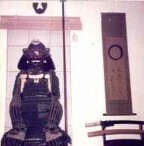
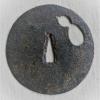
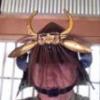
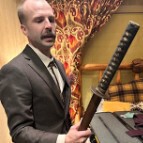
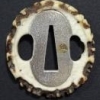
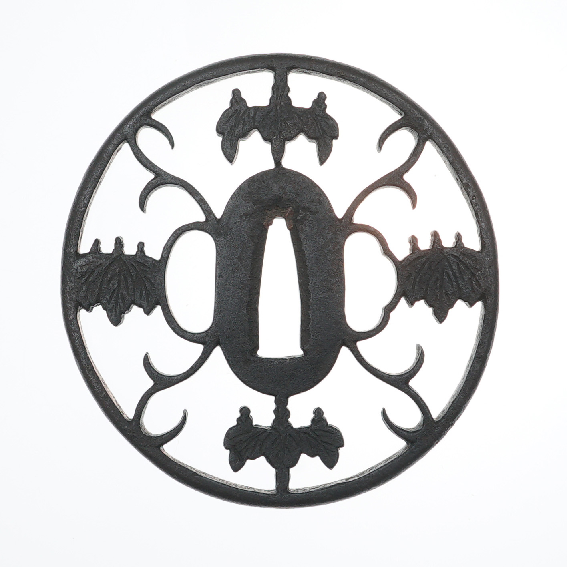
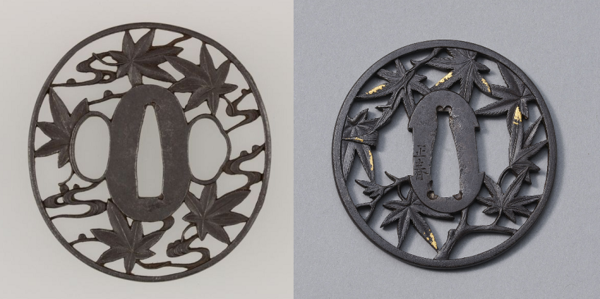
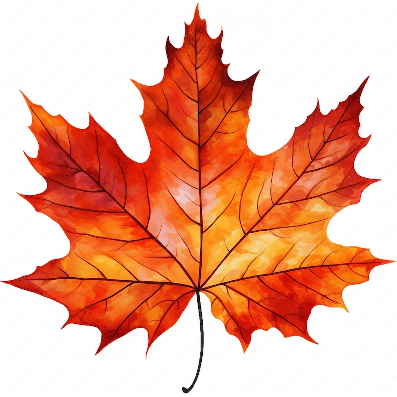
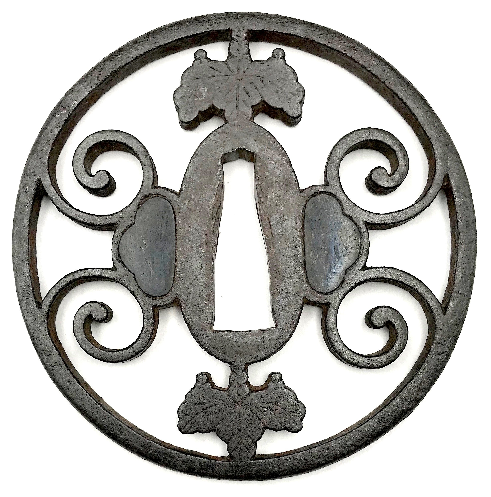
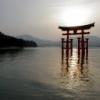

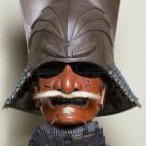
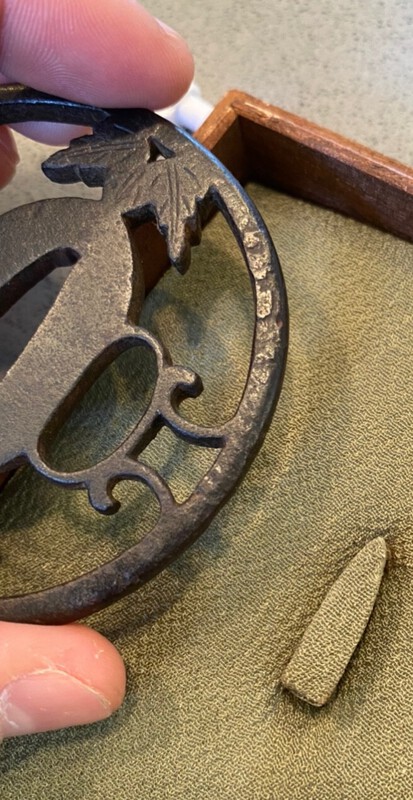
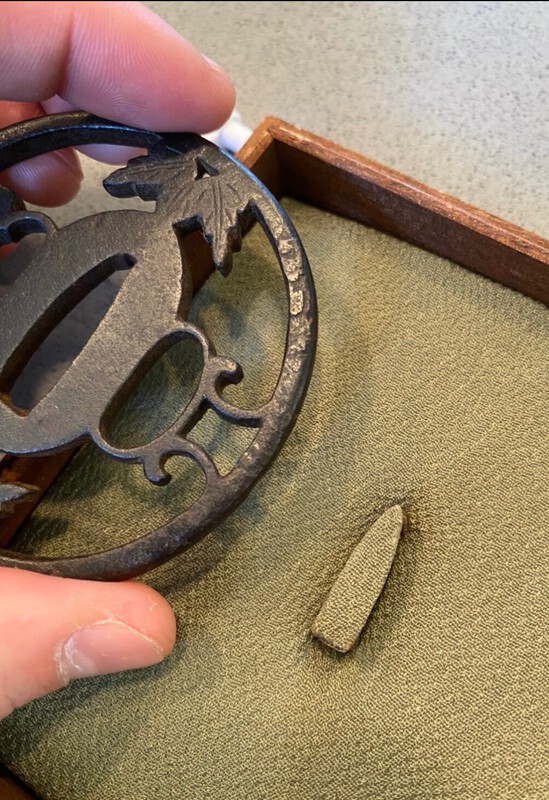
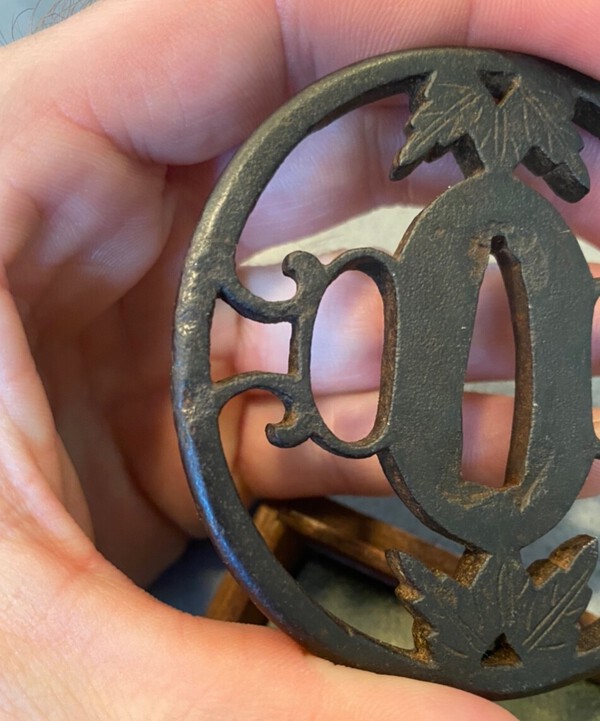

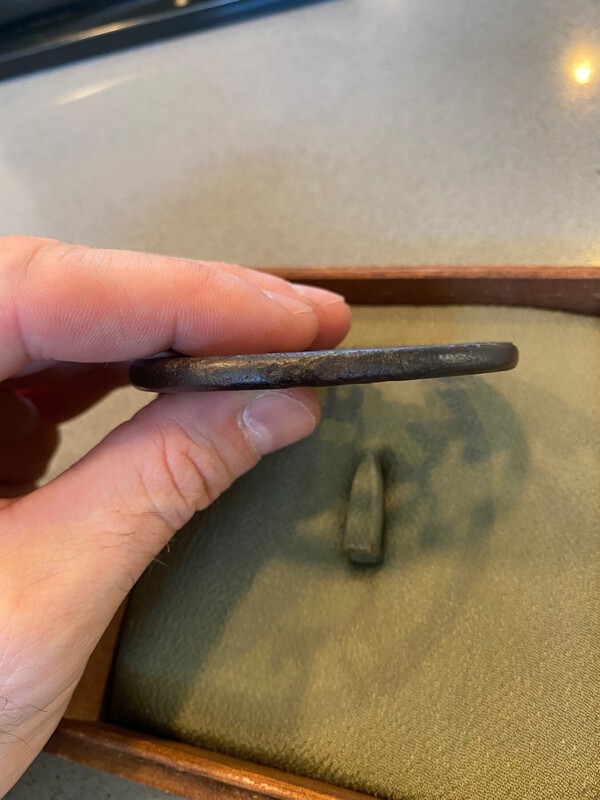
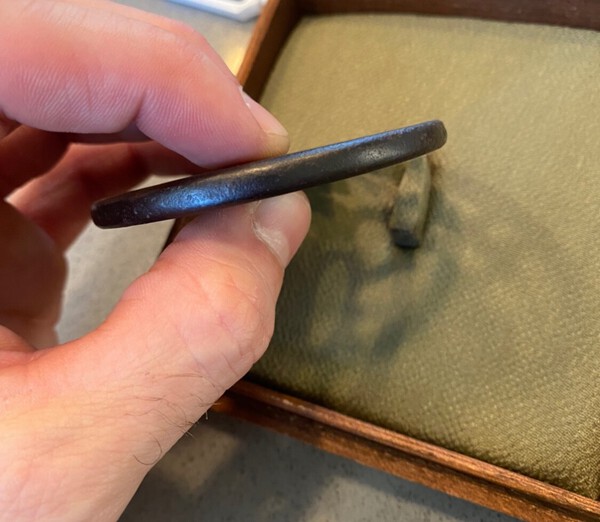
.thumb.jpg.71fa85260220c739952d294bf87066d5.jpg)
.thumb.jpg.f1be80969c779a449be1cd6b91fde786.jpg)



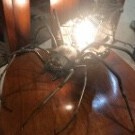

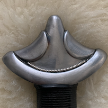
.thumb.jpg.9d983f97359230181d124a60733e8944.jpg)

